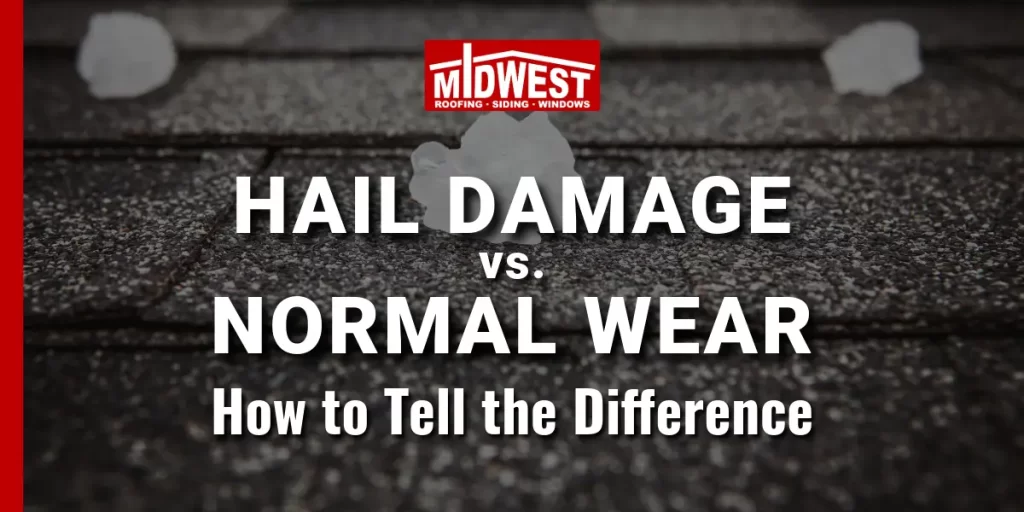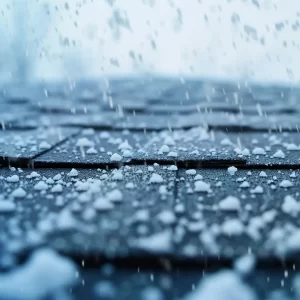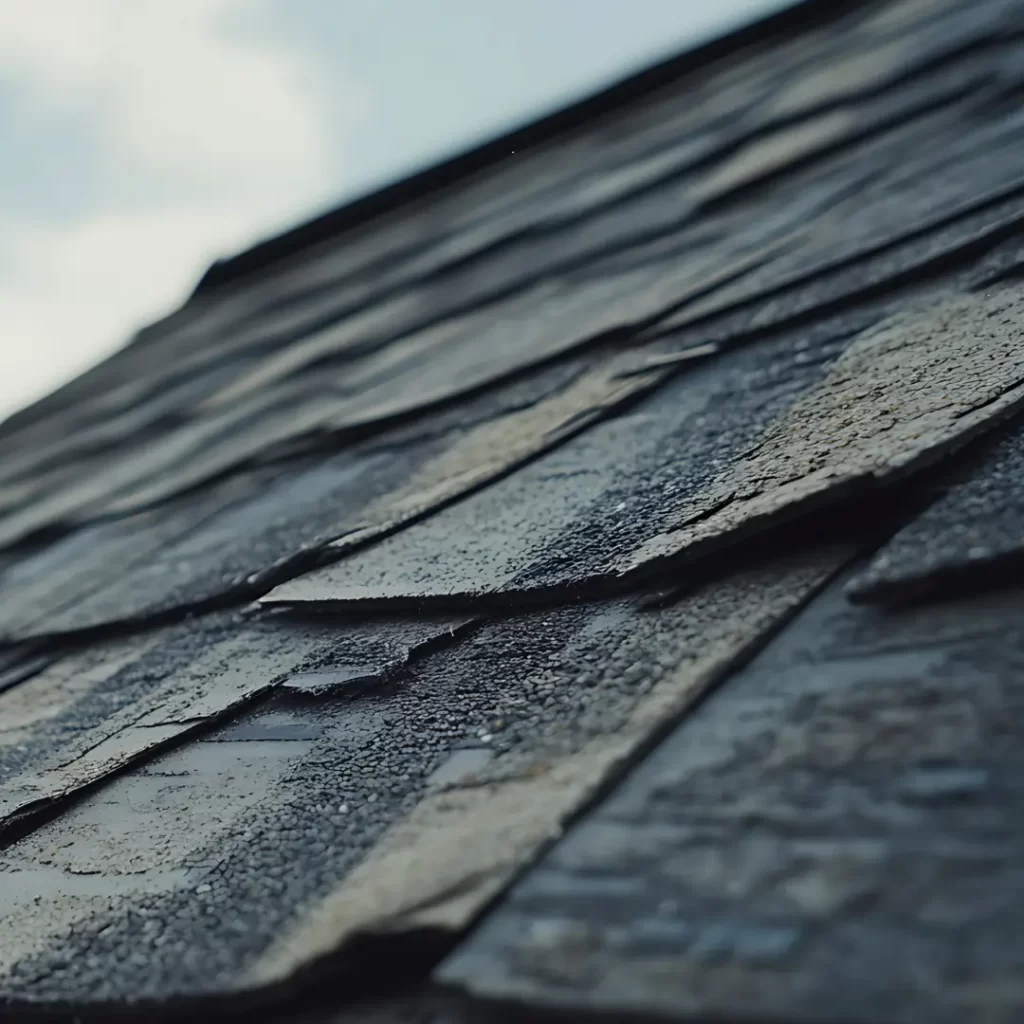
Hailstorms can cause serious damage to roofing systems, with repair or replacement costs generally falling between $6,000 and $20,000. This price will vary greatly depending on the severity of the damage, the dimensions & complexity of the roof, and labor costs. Even minor hail can crack shingles, dislodge granules, or expose the underlayment, resulting in leaks and structural damage over time. Insurance may cover some expenses, but deductibles and coverage limits can vary. If left unaddressed, hail damage can reduce a home’s value and significantly increase future repair costs. At Midwest Roofing, Siding & Windows, we help homeowners identify and resolve roofing issues related to hail, working directly with your insurance company on your behalf to streamline the claim process.
Roof Hail Damage: What To Do
Follow these steps in the aftermath of a hailstorm:

How To Recognize A Hail-Damaged Roof
Spotting hail damage on a roof requires a detailed inspection, preferably carried out within 24 to 48 hours after the storm, to catch issues early and prevent further deterioration. Naturally, hail damage varies based on factors such as hail size, wind direction, storm duration, roof material, and the age of the roof. Here are common clues indicating roof issues caused by hail:
Impairment Of Asphalt Shingles
To determine if hail has damaged asphalt shingles, look for dark spots where granules are missing, exposing the dark layer underneath. You may also notice dents, cracks, or missing shingles Additionally, the edges of the shingles might be lifted or curled. Over time, this damage can lead to leaks, so it is essential to inspect immediately after a hailstorm and seek a professional evaluation if you are uncertain.
Denting Of Metal Roofing Components
To determine whether hail has damaged metal roofing components, check for small, round dents or dimples on exterior surfaces such as vents, flashings, gutters, trim, eaves and metal panels. The size of the dents will vary based on the intensity of the hail. Run your hand slowly over the metal to feel for any uneven spots. Hailstones may also cause paint chipping or coating loss, which can expose the metal to rust and cause future corrosion.
Roof Fixtures Incurring Damage
Hail damage to roof fixtures (skylights, vents, chimneys, pipe boots, etc.) often appears as cracks, dents, or breaks. Inspect skylights for shattered or spider-webbed glass and plastic vents for splits or holes. Chimney covers and the adjacent flashing may show dents or loose seams. Damaged fixtures can lead to leaks, so a proper inspection after a hailstorm can help ensure they remain sealed and intact against water intrusion.
Interior Signs Of Roof Damage
Evidence of hail damage to a roof often shows up as water stains on ceilings or walls, indicating leaks. You may also notice peeling paint, mold growth, or a musty odor from damp insulation. In the attic, check for wet spots, visible light coming through the roof, or rotting wood. These signs suggest that hail has compromised the roof’s ability to keep moisture out. As a homeowner, you will need to take immediate and decisive action.

How Much Hail Damage Is Needed To Replace A Roof?
The amount of hail damage required to replace a roof depends on (i) your insurance policy and (ii) the extent of the impact. Generally, if 25-30% of the roof is damaged or if hail has compromised the integrity of the shingles across multiple areas, a full replacement may be recommended. An inspection by a licensed roofer or adjuster is essential in determining whether replacement is necessary.
Choosing The Appropriate Roofing Contractor
At Midwest Roofing, Siding & Windows, we assist Twin Cities (MN) homeowners in evaluating their roofs right after a hailstorm. Don’t take chances with random doorknockers and fly-by-nighters from out of town. Instead, trust the local roofing company with a reputation for helping Minneapolis-St. Paul homeowners in precarious situations for over 50 years. Contact us today to schedule your complimentary roof inspection.